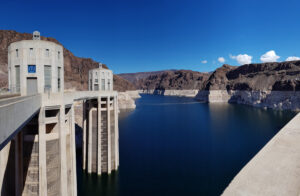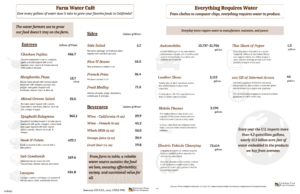Welcome to the Future of California Water Policy
While we await an update on the Voluntary Agreements, it’s a good time to take a closer look at the many benefits of this generational change in managing water and the future of California water policy.
First, it’s important to understand just why the Voluntary Agreements are so revolutionary.
The regulatory structure we’re leaving behind operates by defining winners and losers. In a complete break with this system of built-in conflict, California is recognizing that we all share our most valuable resource and all water users should participate in determining its allocation. Under the Voluntary Agreements:
All water users come together and make decisions through a collaborative process:
Water users large and small, farms, cities, rural communities, conservationists as well as federal, state and local agencies have input, making the results comprehensive and immediate. In fact, the array of benefits provided by the Voluntary Agreements are only possible because of the cooperative process.
small, farms, cities, rural communities, conservationists as well as federal, state and local agencies have input, making the results comprehensive and immediate. In fact, the array of benefits provided by the Voluntary Agreements are only possible because of the cooperative process.
Urban realities are recognized and planned for: We can’t pretend that people don’t need water or that the state will cease to grow. Conservation is critical, but it can’t be the only tool. The Voluntary Agreements will help meet the needs of urban Californians as well as assist in preparing for the future.
Rural communities are not left behind: In the past, some rural areas have lacked a strong enough voice to ensure reliable surface water deliveries. Under the Voluntary Agreements, they have that voice.

Farms secure water reliability: California families, and the world, depend on our farms for healthy, affordable food. In fact, according to the Environmental Defense Fund (EDF), “Food demand is expected to increase by more than 50% in just the next 30 years as the world’s population continues to grow.” EDF goes on to say, “Together, we can secure healthy food and clean water for all people without sacrificing the environment.”
We agree and believe the Voluntary Agreements are critical to making that happen because they provide farms with a key missing ingredient: reliability. If farms don’t know how much water they will have they can’t make planting decisions. In exchange for using less water overall and providing funding for environmental projects, farms will know how much water they will have and be able to plant accordingly.
The environment gets an increased and stable water budget: Because the Voluntary Agreements are a result of collaboration between all stakeholders, the increased amount of water for the environment will be protected. In September 9, 2019 comments submitted to Governor Newsom, the Public Policy Institute of California (PPIC) noted this as a key factor in building a water resilience portfolio. “One of the more important tools that should be adopted is ecosystem water budgets—blocks of water set aside for the environment that can be managed flexibly.” The Voluntary Agreements provide this important tool, delivering support for fish as well as wildlife.

Ongoing funding provided for ecosystem management: In the same report, PPIC also recommends we begin treating the ecosystem as a whole by addressing multiple issues at once. “Rather than focusing on just protecting listed species in order to acquire Clean Water Act and endangered species Act permits, the goal is to define and manage toward a healthy ecosystem.”
In another historic first, farms and other water users are agreeing to tax themselves in order to meet this goal. Scores of projects will be launched under the Voluntary Agreements from fish screens and fish passages to the creation and improvement of habitat to the removal of predator hotspots. These projects, combined with environmental water budgets, will help repair our critical ecosystems and keep them healthy for future generations. (See project maps) PPIC notes one existing project as an example of the kinds of multi-benefit projects necessary: “The Sacramento Valley salmon restoration program—which facilitates the use of the region’s lands and waters for agriculture, waterfowl habitat, salmon migration, and flood control—is a good example.”
Science is real, let’s use it. One thing we know for certain is that our current system is not working for anyone or anything, including the environment. Over the past decade, threatened fish have continued to decline and one of the reasons is outdated science. Our existing regulatory system is simply not nimble enough, nor does it include enough flexibility to adapt as science evolves. In fact, in passing a new flow plan in December of 2018, the California State Water Resources Board noted that it is currently not allowed to consider any factors other than water quality requirements and the amount of water in our rivers. That means they could not utilize everything we’ve learned about the multiple causes of declining fish populations. Under the Voluntary Agreements a new adaptive management structure will allow us to monitor progress and adjust as our experience and knowledge grow – and that’s good for everyone.
Solutions are tailored to ecosystems. The needs of the ecosystem on the Sacramento River are different from the San Joaquin, which are different from the Feather River and on down the line. Rather than apply one-size-fits-all solutions, the Voluntary Agreements are built on a foundation of local expert knowledge and experience, with all stakeholders at the table.
Governor Newsom and his administration have shown tremendous vision in making this break with business as usual. The Voluntary Agreements are a bold move into the future, and we look forward to working with all water users to make them successful. The time is now for Californians to choose a science-based future for our water supply and the environment.


